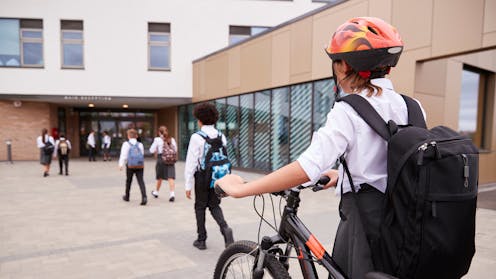Boys are more resilient than girls to school setbacks. Here’s how you can help
- Written by The Conversation

As educational psychology researchers, we are very interested in how students deal with setbacks and challenges in their schooling.
Research has found resilient students tend to have more positive academic outcomes. These include making greater effort with their work, having better study skills and enjoying school more than students who are less resilient.
We measure this resilience through something called “academic buoyancy”. This is a personal attribute that helps students overcome common setbacks at school, such as a heavy workload, poor test results or competing assignment deadlines.
In the past two decades of research into resilience or academic buoyancy, there has been a concerning trend suggesting girls report lower levels of academic buoyancy than boys.
To better understand this, we analysed all existing studies to conclusively work out if this gender gap exists, and if so, to what extent.
Our research
A meta-analysis is a research technique aimed at identifying the average effect of a phenomenon across a large number of studies. In the case of gender and academic buoyancy, meta-analysis can be used to calculate the average difference between girls and boys in academic buoyancy.
Meta-analysis produces an “effect size” that can be categorised as small, medium or large. In our case, the bigger the effect size, the greater the difference between girls and boys in academic buoyancy.
We searched for all published academic buoyancy studies across major databases. We also contacted leading researchers in the field for any studies into academic buoyancy they had conducted, but had not published.
Following this process, our meta-analysis included 53 studies published between 2008 and 2024 reporting on the link between gender and academic buoyancy. It involved 173,665 students from primary school through to high school and university. Study locations included Australia, the United Kingdom, United States, Canada, Jamaica, Finland, China, Singapore and the Philippines.
What we found
We found the average effect of gender on academic buoyancy was statistically significant and small-to-medium in size. This means there was a reliable and noticeable difference between girls and boys and their reported levels of academic buoyancy.
In other words, girls are less resilient to everyday academic challenges (such as a poor mark or negative interaction with a teacher) than their male peers.
While we did not set out to study why this is the case, previous research suggests this could be because girls experience higher levels of academic anxiety than boys and these higher levels of anxiety may make it more difficult for them to navigate academic adversity. Now these meta-analysis findings are known, there is a need for research to more closely examine the reasons for the gender difference.
Our results, of course, are average findings. This does not mean all girls report lower academic buoyancy and not all boys are buoyant.
So efforts should therefore be aimed at boosting the buoyancy of those who struggle with academic adversity and sustaining it among those who are managing well.
Previous research suggests there are two broad approaches educators, along with parents, can take.
The direct approach
Teachers, counsellors and parents can work to directly boost students’ academic buoyancy through the following steps:
– teaching students to recognise academic adversity early, before that adversity becomes more difficult to manage. For example, when it is starting to take them longer to do homework than other students.
– explaining to students how to adjust their thoughts, behaviour, and/or emotions in the face of this adversity. For thought, they might have to start thinking about what possible resources they can draw on. For behaviour, they might seek help from a teacher as one source of support, when normally they may not do so. For emotion, they may need to minimise fear they may have about asking that teacher for help.
– encouraging students to take heart from small improvements. For example, if asking the teacher for help works, they should see this as a “win” (“I can overcome problems”).
– encouraging students to keep noticing and adjusting their thoughts, behaviours and/or emotion in response to adversity. So this becomes part of their everyday habits.
The 6 Cs of an ‘underpinning’ approach
Another approach involves targeting the factors that underpin academic resilience. Our previous research has identified six factors or points where educators and parents can help students.
1. Confidence: boosting students’ self belief in their ability to succeed.
2. Coordination: helping students with academic planning and task management.
3. Commitment: building students’ persistence; for example, through goal-setting and goal-striving.
4. Control: directing students’ attention to things they control, such as their effort.
5. Composure: reducing students’ anxiety; for example, through addressing fearful thoughts and adopting relaxation strategies that work for them.
6. Community: building strong interpersonal relationships with peers and teachers, so they feel supported.
As these strategies are being considered, educators also need to accommodate other pressures in students’ lives that may be contributing to or exacerbating a student’s difficulties, such as social difficulties or issues at home. They also need to consider any clinical issues such as attention-deficit/hyperactivity disorder (ADHD).
Taken together, with the support of educators and parents, there are practical changes students can make to boost their response to academic adversity, and in turn, help close the gender gap around academic buoyancy.







